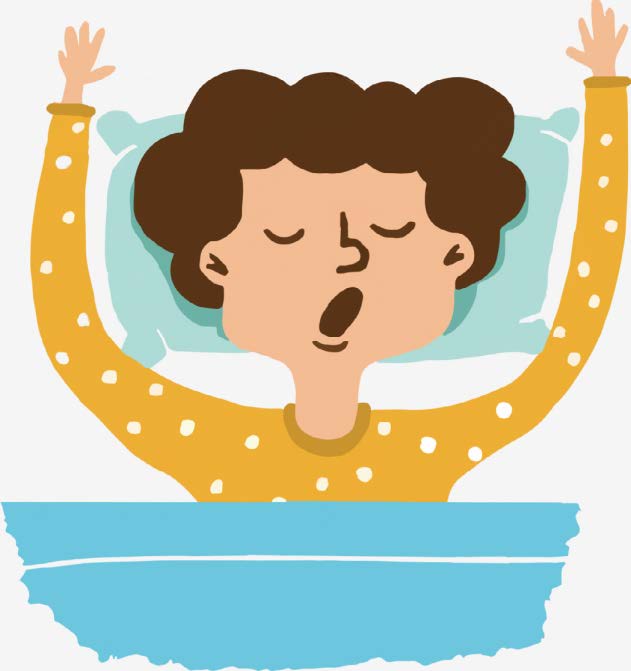An Underdiagnosed Chronic Disorder
BY PAUL LEVINE DDS, DAVID FRAY DDS, MBA AND BEN F. WARNER, MS, DDS, MD

Sleep is essential for normal growth and development in children and adults. Proper sleep is vital for our bodies to function at an optimal level and even help prevent chronic diseases. Obstructive sleep apnea (OSA) is a common sleep related breathing disorder characterized by recurrent collapse of the upper airway during sleep.
Obstructive sleep apnea leads to recurrent episodes of hypoxemia (reduced blood oxygen) with resulting arousals from sleep and sleep fragmentation. This results in major fluctuations in blood pressure and increased sympathetic activity leading to an increased risk of cardiovascular diseases, diabetes, excessive daytime sleepiness, depression, and cancer to name a few. Recent studies put the prevalence of obstructive sleep apnea (OSA) at 34% in men and 17% in women. It is now thought that this disease is the number one chronic disease of industrialized countries. It is also grossly underdiagnosed with only 15% of patients being diagnosed that have OSA.
Obstrucive Sleep Apnea: Questions & Answers
How do I know if a family MEMBER HAS OSA?
The most common symptoms are snoring, witnessed pauses in breathing, and daytime sleepiness. In addition, poor quality of sleep can lead to cognitive decline, changes in childhood behavior, and reductions in normal growth and development in children. If you become suspicious that either you, a family member or friend may have OSA, then you should discuss this with your family physician or dentist. They are trained in recognizing the signs (what the doctor sees or assesses) and symptoms (what the patient feels) for initial screening.

What is the cause of OSA?
A major cause of OSA is due to the tongue and soft palate blocking the airway during sleep. Does your child have large adenoids, tongue and tonsils? Are they congested and have difficulty breathing? Are you concerned about the frequency of upper respiratory infections? If so, OSA risk should to be evaluated. The current gold standard for testing for OSA is a polysomnogram that will record how many times a night the airway closes or partially closes. This is performed in a sleep facility that is overseen by a boarded sleep physician who will interpret the sleep study.
Is this a problem for individuals with intellectual disabilities?
OSA affects people with and without disabilities. However, adults with obesity and people with restricted airways are more at risk. Research has shown that people with OSA and Down syndrome are more at risk for health issues than other developmental disabilities. The National Down Syndrome Society (NDSS) promotes awareness of OSA for individuals at risk. Their website states: "There is a 50-100% incidence of obstructive sleep apnea in individuals with Down syndrome, with almost 60% of children with Down syndrome having abnormal sleep studies by age 3.5 — 4 years. The overall incidence of obstructive sleep apnea increases as children grow older" (Source: ndss.org/resources/obstruc- tive-sleep-apnea-syndrome). Additionally, the NDSS is concerned about the risk for cardiovascular issues exacerbated by sleep- disordered breathing and the risk of increased high blood pressure in the arteries of the lungs (pulmonary hypertension).

Why Individuals with Down syndrome?
The shape of the oral pharyngeal airway is the reason why people with Down syndrome have obstructive sleep apnea (OSA) at a higher rate. They have narrower air passages, a larger than normal tongue, and enlarged adenoids and tonsils.
What are the treatments for OSA?
Once diagnosed, the recommended treatment could include CPAP (continuous positive airway pressure), oral appliance therapy, soft tissue surgery, or hypoglossal nerve stimulation. This can include healthcare providers with various credentials. These sleep specialists can be physicians (internists), surgeons (otorhinolaryngologist), dentists (dental sleep medicine), and others specially trained in OSA. Dentists are in a unique position in that they examine the oral cavity and associated structures where sleep apnea originates and can refer to a sleep physician for definitive diagnosis. Research studies have demonstrated that even after the most common surgical intervention, which is removal of adenoids and tonsils, that individuals with Down syndrome can have persistent obstructive sleep apnea and need further treatment.
Why have I not heard about this before?
The education of sleep apnea is increasing in medical and dental schools across the country to aid in early diagnosis and treatment of more patients. The goal is to increase the public awareness of this chronic disease to reduce the number of patients that present to their physicians and dentists with risk factors of hypertension, type ll diabetes, depression, and other cardiovascular diseases. The obesity epidemic in the United States has contributed greatly to OSA becoming such a chronic disease. This should be addressed along with reducing other risk factors for OSA. Many dentists today are trained in recognizing the risk factors for obstructive sleep apnea and play an integral role in reducing the ill health effects of this chronic disease. The American Dental Association is now recommending that every patient be screened for the risk factors for OSA.

We have heard for decades that it is important to get a good night's sleep. Now, we have supporting research. This really can improve your quality of life.•
ABOUT THE AUTHORS:
Paul Levine DDS / Assistant Professor, University of Texas Health Science Center at Houston (UTHealth) School of Dentistry, Diplomate American Board of Dental Sleep Medicine. David Fray DDS, MBA is Associate Professor University of Texas Health Science Center at Houston (UTHealth) School of Dentistry, Department of General Practice and Dental Public Health. Ben F. Warner, MS, DDS, MD is Clinical Associate Professor, University of Texas Health Science Center at Houston (UTHealth) School of Dentistry, Department of General Practice and Dental Public Health.